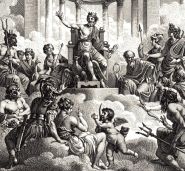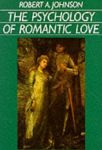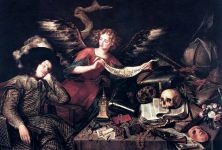Mythology
Mythology can be described as the anthropology of human consciousness, a vast subject mistaken by many as a series of soap operas from ancient Greek, Asian and indigenous cultures, without realising that the intended deeper meaning of these stories is about the complexity of ourselves and relationships. Regardless of our modern superficial additions of mobile phones and internet, we are still the same. The first step to understanding mythology is Archetypes.
Archetypes

Archetypes as stated by Carl Jung are un-conscious components we are born with that are common to all humanity. These un-conscious components organise and direct our thought and behaviour. They also play a part in forming our cultural and self-identity. When asleep our dreams appear random without our ability to direct them. When awake we often experience thoughts and feelings that are independent of our will. We can unwittingly find ourselves identifying with mass trends and beliefs, religious or otherwise. Our obsession with celebrities, brand image including National identity are interlocked with superstitions, astrology, numerology taro, etc. But what is the symbolic, mystical and spiritual - is there a rational explanation?
Words can be divided into basic groups. Objective words are, rock, cat, bicycle etc. Subjective words are, large, soft, left, clockwise, colour etc. Hybrid words represent hierarchical concepts, Mother, God, Virtue, Bad, Employee President etc. Archetypes are not the actual words or phrases but the effect a word or phrase evokes within our mind. A Mountain, Church, Ocean, Bird, Funeral, or a Snake can evoke feelings of awe, joy, grief, anger or fear. Almost any word or phrase can evoke Archetypes. This can be as simple as hearing an annoying phrase "Have a nice day" stated by a checkout attendant. The God Zeus within us may wish to vaporise the attendant with a lightning bolt.
The death of Lady Diana 1997 was symbolically personalised by millions throughout the world although the only knowing of her as a Princess was through mass media. The symbolism of the Twin Towers destruction evoked Archetypical forces of revenge and genocidal rage on a mass scale; whereas the sinking of a Bangladesh ferry in a typhoon with the loss of 3,000 lives was only reported in the back pages of western media. A vast percentage of our thoughts and behaviour is un-consciously Archetypical and if we choose to be unaware we are consumed within cultural forces of political and religious ideology, superstition, egotism and materialism - living a second-hand existence.
Masculine and Feminine

Masculine and Feminine Mythology is not intended to represent gender (male female) but fundamental aspects of human consciousness common to both genders. Masculine mythology represents form and order, whereas feminine mythology represents love and relatedness. Many methaphoric variations of Yin and yang are common, an example is describing left right hemispheres of the human mind as logical and intuitive.
The quest of Masculine mythology is to transcend the Self. The Hero sacrifices the Self for the higher cause of Truth. Feminine Mythology is the quest for inquiry and sorting detail (fact from fiction) (wheat from chaff) to achieve emotional stability, secure relationships and necessitates of life.

In our modern world, we do not have time to look at the deeper meaning within Mythological stories. Similar to junk food Hollywood serves us truncated infantile versions of plagiarised Mythological stories that in no way challenge us to look within ourselves or at our relationships with each other. Good versus evil is projected externally on the big screen, where it is devoid of responsibility and consequence in the real world. Dissatisfaction with our lives is inverted while we temporarily identify with these entertaining commercialised fabrications.
Anima and Animus

Each one of us is partially Self-aware of the external character we display to the world. This external aspect of ourselves may appear as a Masculine or Feminine Archetype, whereas the un-conscious nature of ourselves will be its complement. The original Jungian model described Anima as the un-conscious of the Male gender, and Animus as the un-conscious of the Female gender; however, no differences in consciousness between genders has been proven. It is impossible to know which gender has written a particular novel, as with handwriting, mastery of a musical instrument or expertise in doing brain surgery.
We are all subjected to cultural gender conditioning. The female gender is capable of displaying an external Masculine Archetype with un-conscious Anima. The male gender is just as capable of displaying an external Feminine Archetype with un-conscious Animus. A man is meant to appear brave and tough on the outside but he maybe timid and insecure on the inside. A woman is conditioned to appear soft and compliant on the outside but she maybe hard and un-forgiving on the inside. Complications occur when each gender projects their romanticised Anima and Animus onto the other. Suppressed Archetypes start competing and the battle of the sexes begins.
Robert Johnson wrote an excellent book decoding the Arthurian myth Tristan and Iseult describing how 'Romantic Love' between the sexes sprang into human consciousness approx 1,000 years ago with tragic consequences. Shakespeare's Romeo and Juliet was based on this myth. Before that time romantic love was contained within religious context and not projected onto the outside world in people. This passage from Robert Johnson's book describes the problems of Anima and Animus.
"The psychology of romantic love" Chapter 16 Iseult-Maya; The Dance of Illusion

In Hindu myth Maya is the goddess who dances the dance of illusion, weaving a gossamer veil that hangs between humanity and reality, distorting our vision of what is. Often it is said that the purpose of yogic practice is to "see through the veil of Maya."
As our myth nears its end, that veil slips over Tristan's eyes. Maya casts her spell over him. It is no longer Iseult inspiring him, but Maya, keeping him in a perpetual dream. His feet never touch the ground; he sighs, he longs, he wanders back and forth between Carhaix and Cornwall in a delirium, a virtual madness. Nothing touches him, nothing interests him, except the image of Iseult that he carries in his mind. Her image obsesses him, but it no longer serves life: It leads toward nothing. He is lost in a fantasy that brings him no closer to the inner world yet cuts him off from the outer world of his friends, his wife, his physical life. For the rest of his days he wanders in Maya's dream, dead to all else, dancing distractedly to music that he alone hears, from a realm no one else can see.
Maya is Illusion: the distortion of reality, the loss of reality. Our story tells us that romantic love is afflicted with illusion; a man wakes up to his illusion when it suddenly dawns on him that the woman he is in love with will not, cannot, solve all his problems and make his life blissful with no further effort on his part. His wife awakens to her illusion when she sees that he is someone different from the man she thought she was marrying and worse, that he is often insensitive and thoughtless, just like all other men. She hadn't seen the man; she'd seen her illusion. But where do these illusions come from?
Many Hindus, like some Christians, believe that the Physical world around us is the illusory world that only the spiritual world is real. Most Westerners, though, believe that the inner spiritual world is the illusion, that only the physical world is real. But illusion is neither the inner world of psyche nor the external physical world. Illusion is a distorted relationship between inner and outer. We give birth to illusion by superimposing our inner world of images our continuous stream of fantasy on the external world and on the people who live there. We see the physical world colored and distorted through the film of our inner images. Thus, as said Saint Paul: "Now we see as through a glass, darkly."
Shadow

Mephistopheles is the Demon that represents the Shadow side of our consciousness. Ironically, Dark matter of the universe is a good analogous description of Shadow. In ancient times, the word Demon referred to the negated part of ourselves that would make us whole. Over time the word Demon was changed to represent negative aspects of ourselves pointing to animal behaviour not acceptable in humans, nudity, eating our own species, fornicate, masturbate or defecate in public view, stating directly what we think, openly expressing our feelings, crying, screaming or laughing in public. The prohibition list is almost endless.
Shadow is also the un-conscious source of our mood, temperament and disposition. It can humorously be the un-conscious force that causes teenage boys to have embarrassing erections and teenage girls to be gripped by mass hysteria at rock concerts. The thrill of driving a fast car, excitement of a wild party with booze, sex and illicit substances. Religious text refers to prohibition of the Seven deadly sins Lust, Gluttony, Greed, Sloth etc. The sins are not the Shadow but the un-conscious energy from which the expression derives. The prohibition of our primal animal instincts and desires (from where we evolved) now resides within our un-conscious.
Only by re-integrating the negated Demon (responsibly) can we become a whole person. The shadow is neither negative nor positive. It is sometimes natural to feel greedy, slothful, jealous and un-forgiving. The difference between right and wrong is often a matter of timing. Morality is a judgment we make on the external world. There is no morality within our un-conscious world. The path to hell is paved with good intentions.
We sometimes withhold a part of ourselves in the belief that this enables us to have a relationship, without reflecting on what this means to the other person. If I do not allow the other person to know who I truly am - then, who is the other person having a relationship with?
The Mother archetype symbolises unconditional love, nurturing and forgiveness whereas her shadow can be jealous, possessive and un-forgiving. The Father archetype symbolises discipline, protector and provider whereas his shadow can be weak, cowardly and selfish. The shadow side of our nature is often that which we see in others but do not see within ourselves.
A husband maybe un-aware of his deceit, but think of himself as virtuous, and through denial project that his wife is deceitful. A friend maybe un-aware of her generosity but think of herself as selfish and project onto others that they are generous instead. Understandably it is not possible for us to see the shadow side of our own behaviour. We can only get to know our shadow through feedback and reflection in relationships.
Lilith
 Lilith is the shadow Archetype of independence, expressing desire and natural sexuality, un-controlled by prohibitions, particularly the masculine Archetypical Church that through fear describe her as a Demon of death. The positive nature of this primal energy gives us our artistic expression (music, song, dance and scientific creativity). Whenever we get to see a part of our Shadow it appears as a revelation, and once seen it is no longer within the Shadow. Catching ourselves making
Freudian slips
is an example. Some social comedians
(Billy Connolly)
are cleaver at exposing parts of her within ourselves.
Lilith is the shadow Archetype of independence, expressing desire and natural sexuality, un-controlled by prohibitions, particularly the masculine Archetypical Church that through fear describe her as a Demon of death. The positive nature of this primal energy gives us our artistic expression (music, song, dance and scientific creativity). Whenever we get to see a part of our Shadow it appears as a revelation, and once seen it is no longer within the Shadow. Catching ourselves making
Freudian slips
is an example. Some social comedians
(Billy Connolly)
are cleaver at exposing parts of her within ourselves.
The Holocaust was the result of a global expression that through circumstance was enacted in Nazi Germany. The horror of this legacy is still repeating itself throughout various parts of the world. The dark side of this Demon resides in all of us and remains hidden by denial waiting for the required set of circumstances to re-appear. Only when we accept that the source of this dark energy comes from within all humanity, can it be resolved. Therefore, every human being is accountable to bring it into the light as represented in Vampire myths to be vaporised so it can never draw blood again.
The paradox of humanities present demise and therefore future quest is to re-integrate our shadow bringing it into the light. The shadow of fear only exists within our minds. We can see this struggling to evolve through the debates over human rights, abortion, euthanasia, world trade, stem cell research and cloning. We must, each and every one of us, take full responsibility for bearing no harm to ourselves, others and the environment and release all religious and political prohibition on freedom of human expression.
Dreams

Dreams have captured our imagination in the quest for interpretive meaning throughout recorded time. Whenever humanity encounters something that is mysterious we either ignore, worship or destroy it. Rarely do we seek to understand it. The commercial exploitation for interpreting dreams is driven by our desire for romantic love, money or fame. Books on dreams and cook books become best sellers if the authors are celebrities. What are dreams? Is there a rational explanation?
A bookkeeper may find herself calculating figurers when asleep and awaken exhausted. An argument at the office or home may keep us in turmoil for days with sleepless nights. The anguish of a betrayed relationship can be a heart-wrenching with disturbing hallucinations. The death of a child may result in never ending suffering for a parent who finds a torturing re-unification in dreams. Many large groups of people fabricate an identify of a nationality with a collective dream to justify war to claim a neighbouring land once occupied centuries past by ancestors of the same imagined religion.
Dreams are simply the extension of what is un-resolved in our daily lives.
An un-resolved quest can be searching for understanding; a composer struggling to complete a symphony, a writer un-folding a plot of a novel or a scientist trying to make sense of the universe. When our body is sleeping, the mind attempts to come to rest by searching for resolution to anything that is not understood, logical or rational, that is, anywhere 2 + 2 does not yet equal 4. When asleep we are not distracted by external sensory information and sometimes (not often) a symbolic connection is made that may spark a new idea or approach.
Animals naturally form a ranking with each other to be maximally effective in obtaining food, shelter and reproduction. The purpose of sleep is for restoration, so as to be fully alert when awake. The human mind automatically creates an order of ranking represented in Archetypes as a means to find resolution. But why is resolution impossible? The answer is that Archetypes are not real, they are a function of language (as descriptions) and the description is not the described. Humans evolved language as a means of representing and communicating reality. When asleep the mind has no way of knowing that language is not reality. We all experience dreams that appeared real. Dreams are not often remembered because there is no external sensory input to anchor them.
Why do we fabricate a mystery out of this and turn it into something mystical?
When we are emotionally, financially and politically in conflict with each other and the environment, our minds are in turmoil. When our body collapses in exhaustion, the brain is not distracted by sensory information, everything that is not logical, pragmatic and rational within our daily lives causes our minds to search for resolution within symbolism in an attempt to come to rest. If our relationships were at peace and our bodies well nourished, sleep would be peaceful - the mind completely still.
Interpretation
Everything within a dream is ourselves. If I dream of a mountain; I am the mountain within my dream. If I dream of my mother; I am the mother within my dream. Mountain or Mother will represent whatever it is that mountain or mother represents to me. If we wish to understand its meaning, simply say - "I am the Mountain in my dream" then be the mountain and start communicating with another part of your dream. Allow any part of your dream to communicate with any other part. This procedure alone may not give you a full interpretation of your dreams, however it will be entertaining.
Religion

Viewing religion through a mythological context brings the stories of religious text to life, enabling us to see the deeper meaning in reference to our daily lives. As an example, Adam and Eve can represent many concepts including the duality of human consciousness. Masculine representing form and order, and Feminine representing love and relatedness.
Our capacity to be capable of independent thought (the Serpent) creates a paradox in which we can imagine being our own God (Individualism) separate of the God that created us (the universe). Devouring the fruit of knowledge is when we identify with what we know, or have taken from others and the environment. Creating a false identity with knowledge and acquisition isolates us from love and relatedness with others and the world.
As individual Gods we create institutions of authority in our own image and justify the purpose to bare influence upon others and the environment in the belief that this will provide security. The inner anguish caused by our experience of isolation through our craving for individualism externalises itself randomly amongst us in the form of - violence, suicide, depression, alcoholism and drug addiction; hereby, falling out of the Garden of Eden.
Religious mythology is extraordinarily complex, challenging us to face who we are. Evil is ignorance, when we choose not to pay attention. Adam and Eve show us how we distort our gender relationships when we fail to understand that Strategy is a feminine principle for managing relationships, whereas Discernment is a masculine principle for achieving order, that applies to both genders.
Belief
Meta-cognition is our ability to pay attention to our thoughts; observing and questioning our beliefs. Meta-cognition enhances our capacity for strategy and discernment to insure survival of our species. Believing the literal wording of religious text questions the limitation of human meta-cognition.
If I say - "I believe in God", it is only the God within my mind (as a belief) that is being referred to. The word God is an Archetype of the Self. Therefore saying "I believe in God" is the same as saying - "I believe in myself as an individual", without realising it. If someone wishes to disagree and argue that their belief in God is not about themselves, then it is only themselves that they are arguing with. Getting involved in another person's internal argument, often results in us becoming part of their internal argument also which cannot be resolved.
When asked of Carl Jung "Will the world ever be at peace?" he responded "Only when each person has done their inner work."
Summary
Mythology can be understood by all ages and enriches our world of relationships. Mythology enables us to see the fundamental principles that govern our lives. Above all, mythology allows us to see that the consciousness of humanity is a singularity and that our experiences of joy, grief and suffering are shared by all and isolation is illusion.
There are countless thousands of books on Mythology suited to everyone with an inquiring mind. The authors listed have inspired much of the material on this site. Mythology books are readily available from Amazon and other suppliers.
Man and his Symbols Carl G Jung
The Grail Legend Emma Jung and Marie-Louise von Franz
Interpretation of Fairy Tales Marie-Louise von Franz
Shadow and Evil in Fairy Tales Marie-Louise von Franz
The Psychology of Romantic Love Robert A Johnson
Iron John Robert Bly
The way of woman Helen M Luke
The Secret Life of Money Tad Crawford








wikipedia.org / Mythology
wikipedia.org / Carl Jung
www.pantheon.org / Encyclopedia Mythica
wikipedia.org / Robert Bly
www.robertbly.com
wikipedia.org / Robert A. Johnson
The Works of Robert A. Johnson
wikipedia.org / Marie-Louise von Franz
www.marie-louisevonfranz.com
Tad Crawford